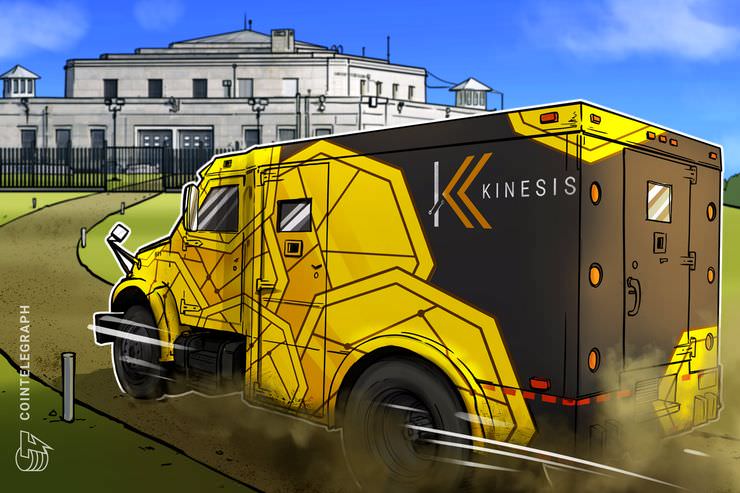
Gold-based monetary system Kinesis aims to bring price stability to the world of cryptocurrency and to prevent the decrease of its value. The company says it has already attracted interest from key players in the gold industry, which is estimated at $6.8 trillion only on London’s gold market (70 percent of the global trading volume).
After the gold standard that once defined the value of currencies was abandoned in the 20th century, the monetary system became dependent on central banking policies. The Kinesis team decided to create its own “efficient, secure and fair monetary system” based on two of the most stable commodities in the world — gold and silver.
“There is [approximately] $15 trillion in gold traded every year, creating exceptional but untapped potential for investment and exchange if gold can be remonetized. Adding a yield to this exchange multiplies this potential exponentially,” says Thomas Coughlin, CEO of Kinesis.
Kinesis offers digital currencies based 1:1 on allocated physical gold (KAU coins) and silver (KAG coins). When users purchase Kinesis currencies, they actually purchase real metal. The ownership of the gold is digitized with blockchain technology, which allows the user to hold or transfer currency from their Kinesis e-Wallet. The Kinesis debit card allows the owner to make the instant conversion of KAU and KAG into fiat currency and spend cryptocurrency all around the world. The company states that, unlike other cryptocurrencies, the transactions through the Kinesis system will take just two to three seconds as a result of their bespoke fork of the Stellar network, which is able to withstand over 3,000 transactions per second. Kinesis believes KAU and KAG currencies could be used in day-to-day purchases like buying a cup of coffee or even buying a car. Besides paying the bills, the Kinesis Monetary System can be used for managing international payments with lower transfer rates offered by banks and other international payment services.
Another option offered by the network is the ability to trade holdings on the Kinesis Blockchain Exchange. The cryptocurrencies can be transferred back to physical gold or silver as the system generates a 0.45 percent fee when these are transferred between the holders, accumulating in a pool to be distributed back to users of the system in the form of a yield.
Kinesis was founded by the Allocated Bullion Exchange (ABX), the world’s first electronic, institutional bullion exchange for physical precious metal. Which gave the new blockchain-based fintech company an exceptional start: extensive infrastructure and a fully operational exchange built for the trade and storage of physical bullion in seven locations around the world. The new — but experienced — startup is able to “bring back a truly decentralized, [digitized] stable asset, based on blockchain technology,” Kinesis says.
ITO Launch
Kinesis is currently in the public sale phase of their Initial Token Offering (ITO) of its Velocity Token (KVT), which will be the first cryptocurrency made available by the startup’s team. KVT is a utility token and is not backed by a physical asset but rather a whole monetary system.
With KVT, investors can get a share of the transaction fees generated by the system (maximum 20 percent). This income is distributed to holders of 300,000 KVT, and company promises there will be no future dilution.
According to Kinesis, there is a high demand of its first tokens. Kinesis says it raised over $50 million just in their presale period by selling over 55,000 KVT.
Disclaimer. Cointelegraph does not endorse any content or product on this page. While we aim at providing you all important information that we could obtain, readers should do their own research before taking any actions related to the company and carry full responsibility for their decisions, nor this article can be considered as an investment advice.
